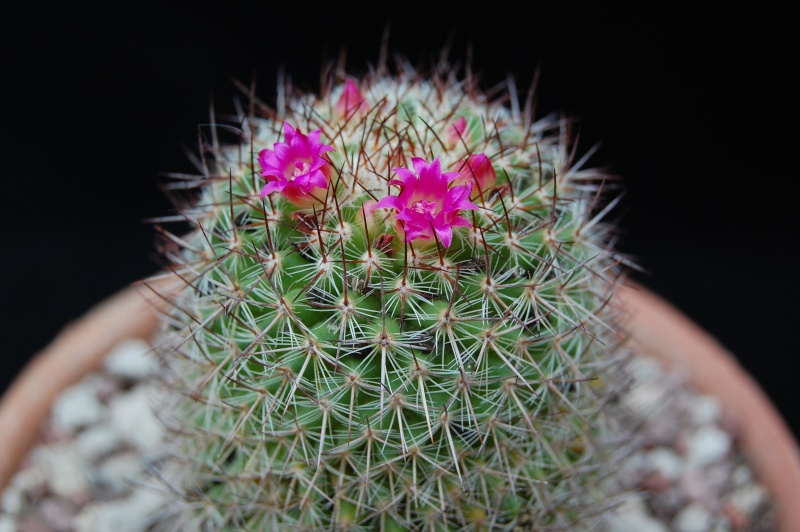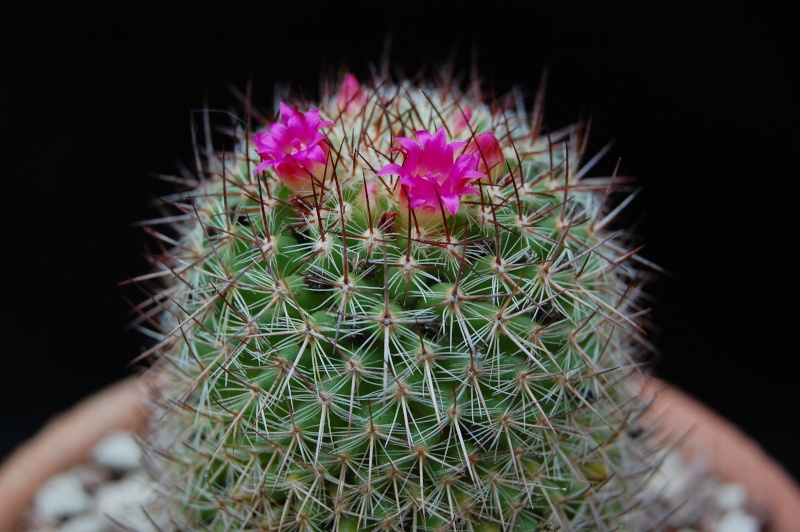M. calacantha Tiegel in Kakteenkunde 1933: 232, 1933, with f i g .
Stem simple, globose; (sap watery); axils with wool at first and sparse bristles .
Central spines 2 or 4, up to 15mm. long, acicular, at first reddish brown with darker tip , becoming paler;
Radial spines usually 25(-35), 5-6 (-7)mm. long, yellowish, shiny.
Fls. (8-) 14mm. long, carmine (perianth segments pale greenish below); stigmas (4-) 5, carmine. (Fr. pink, light green at apex;
Seeds yellowish tan, shallowly and irregulary pitted.)
Mexico: Queretaro. Described from plants sent by Schmoll, and reported by him (according to Craig) from Augostura de Charcos.
Also reported from Guanajuato by Craig.
M. calacantha is an attractive and readily recognised ally of M. rhodantha in the series Heterochlorae, with long, usually curved
and more or less adpressed central spines and regularly-arranged radials .
From "The Journal of the Mammillaria Society" - Vol. VIII n.3 - June 1967
The derivation of Mammillaria species names
Deriving from the Greek words kalos and acantha, meaning having beautiful spines. This presumably refers to the centrals rather than the radials, as they are reddish brown in colour and stand out attractively against the white or very pale yellow radials.
From "The Journal of the Mammillaria Society" - Vol. XVI n.6 - December 1976
Mammillaraia calacantha
Seeds from Mesa Garden - MG 584.3 - gray spines, red flowers


